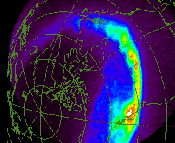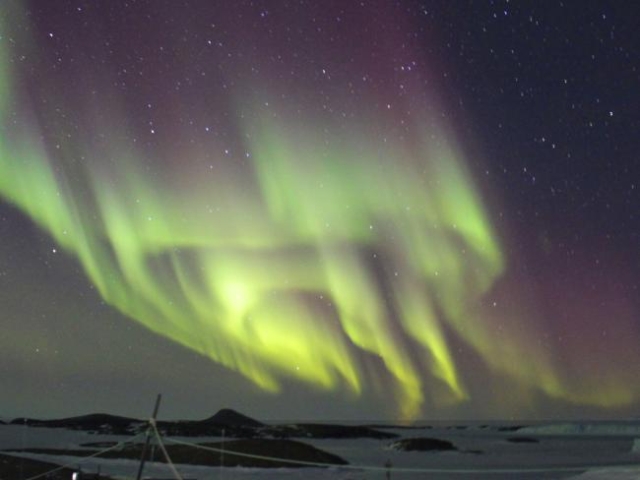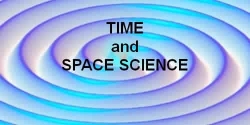Auroras
Auroras
What causes Auroras?
Nature of Aurora Light
Auroral Displays
What are Auroras?

Auroras occur around Earth's north and south geomagnetic poles in regions known as auroral ovals. Southern auroras are called aurora australis; northern ones, aurora borealis. The aurora is higher in the atmosphere than the highest jet plane flies. The lowest fringes are at least 60 kilometres above the Earth, while the uppermost reaches of the aurora extend 900 kilometres above the Earth. The space shuttle flies near 300 kilometres altitude.
Although there are stories about the aurora seeming to reach down into the clouds or to the tops of mountains, these are either illusions or some phenomenon other than the aurora. Only astronauts can fly through the aurora!
Some people believe that the aurora makes sound that accompanies the ripples and flow of the light. If the aurora does make sound, the sound would have to be generated here on Earth by some electromagnetic effect. Any noise generated by the aurora would take a long, long time to travel all the way to Earth, and the air up by the aurora is much too thin to carry sound. So does the aurora make noises? Nobody knows for sure!
What causes Auroras?
Auroras occur because Earth's magnetic field interacts with the solar wind, a tenuous mix of charged particles blowing away from the sun. This wind from the sun sweeps by Earth in the interplanetary magnetic field which is produced by the sun. We are protected from the solar wind's direct effects by Earth's comet-shaped magnetosphere, where the Earth's magnetic field is distorted by the interplanetary magnetic field and the solar wind. The electrical energy generated by the charged particles blowing across the Earth's magnetic field send charged particles down into the Earth's upper atmosphere.
Nature of Aurora Light

Auroral light is similar to light from color television. In the picture tube, a beam of electrons controlled by electric and magnetic fields strikes the screen, making it glow in different colors, according to the type of chemicals (phosphors) that coat the screen. Auroral light is the from the air glowing as charged particles, particularly electrons, rain down along the Earth's magnetic field lines. The color of the aurora depends on the type of atom or molecule struck by the charged particles. Each atmospheric gas glows with a particular color, depending on its electrical state (ionized or neutral) and on the energy of the particle that hits the atmospheric gas. High-altitude oxygen, about 200 miles up, is the source of the rare, all-red auroras. Oxygen at lower altitudes, about 60 miles up, produces a brilliant yellow-green, the brightest and most common auroral color. Ionized nitrogen molecules produce blue light; neutral nitrogen glows red. The nitrogens create the purplish-red lower borders and ripple edges of the aurora.
Auroral Displays

Auroral displays vary from night to night and during a single night. Usually, if sun-earth conditions produce an auroral substorm, a diffuse patch of glowing sky will be seen first, followed by a discrete arc that brightens, perhaps a thousand-fold in a minute. As an arc moves toward the equator, new ones may form on its poleward side. Appearing within arcs are upward-reaching striations aligned with the magnetic field, giving the impression of curtains of light. Ripples and curls dance along the arc curtains and pulsating patches of light may appear in the morning hours. If you have never seen the aurora yourself, videos are available that will give you some idea of what it is like, but you will have to come to Alaska in the wintertime to really appreciate the beauty of the aurora.

